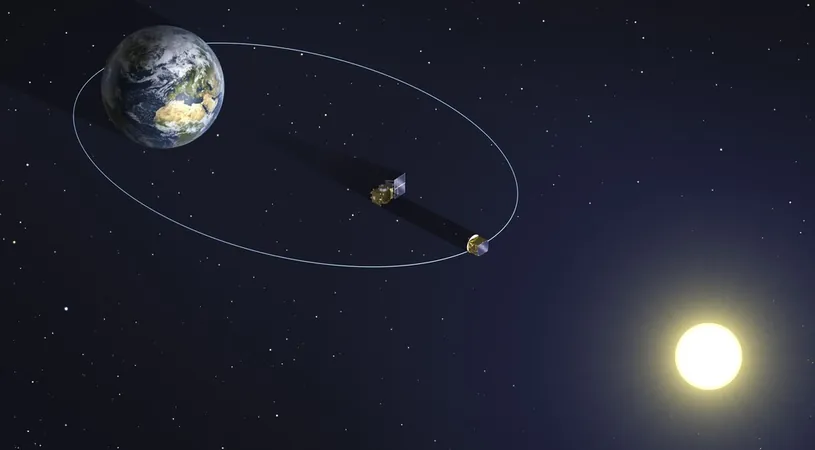
Scientists Unveil Revolutionary 'On-Demand' Solar Eclipses to Unlock Secrets of Our Sun's Corona
2024-12-26
Author: Wei
Breakthrough in Solar Observation
In an exciting breakthrough, the European Space Agency (ESA) is launching a groundbreaking project that will enable scientists to create artificial solar eclipses at will, facilitating unprecedented studies of the Sun's corona—its outer atmosphere that is hotter and larger than the Sun itself.
Understanding the Corona
The corona has long eluded comprehensive understanding due to the overpowering brightness of the Sun, which makes detailed imaging from Earth nearly impossible. This new technology, called Proba-3, promises to illuminate the mysteries of the corona, which has profound implications not only for astrophysics but also for our everyday life, as its dynamics impact space weather phenomena.
Proba-3 Mission Details
The Proba-3 mission, developed by a collaboration of 14 member states and constructed in Spain, was successfully launched by India on December 5th. It is composed of two synchronized satellites: the Occulter and the Coronagraph, which are positioned approximately 1.5 football fields apart. This unique setup allows the Occulter to block out the Sun's intense light, creating a shadow in which the Coronagraph can capture detailed images of the corona for a remarkable six-hour period—something no Earth-based telescope can achieve.
Challenges Ahead
However, the mission isn't without its challenges. Damien Galano, the mission manager, emphasized the precision required for the satellites' positioning. “To achieve Proba-3’s mission goals, the two satellites need to maintain positioning accuracy down to the thickness of an average fingernail while they orbit at high speeds through space,” Galano explained.
Importance of the Corona
The corona is not just a fascinating scientific topic; it plays a crucial role in protecting astronauts and spacecraft from the dangers of solar winds and coronal mass ejections—massive bursts of solar energy that can disrupt electronic systems on Earth.
Expert Insights
Andrei Zhukov, Principal Investigator for the Proba-3 Coronagraph unit at the Royal Observatory of Belgium, highlighted the significance of this mission. He stated, “Currently, we can only image the solar disc and the lower corona effectively. The Proba-3 project is set to fill a critical observational gap, enabling us to study the corona's features more than three solar radii from the Sun, which is essential for understanding the solar wind and space weather dynamics.”
Future Implications
This revolutionary capability has the potential to transform our understanding of solar physics and its impact on the solar system. In addition to improving our knowledge of solar phenomena, the data collected by Proba-3 could inform technologies designed to mitigate the effects of solar storms on satellites and electrical grids on Earth.
Conclusion
Stay tuned for more sun-soaked discoveries as Proba-3 embarks on its mission—this is just the beginning of an astronomical adventure that could redefine our understanding of our closest star!
 Brasil (PT)
Brasil (PT)
 Canada (EN)
Canada (EN)
 Chile (ES)
Chile (ES)
 Česko (CS)
Česko (CS)
 대한민국 (KO)
대한민국 (KO)
 España (ES)
España (ES)
 France (FR)
France (FR)
 Hong Kong (EN)
Hong Kong (EN)
 Italia (IT)
Italia (IT)
 日本 (JA)
日本 (JA)
 Magyarország (HU)
Magyarország (HU)
 Norge (NO)
Norge (NO)
 Polska (PL)
Polska (PL)
 Schweiz (DE)
Schweiz (DE)
 Singapore (EN)
Singapore (EN)
 Sverige (SV)
Sverige (SV)
 Suomi (FI)
Suomi (FI)
 Türkiye (TR)
Türkiye (TR)
 الإمارات العربية المتحدة (AR)
الإمارات العربية المتحدة (AR)